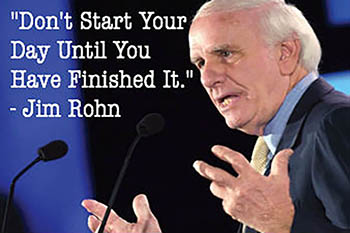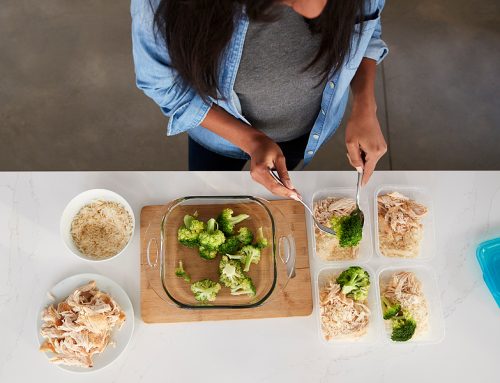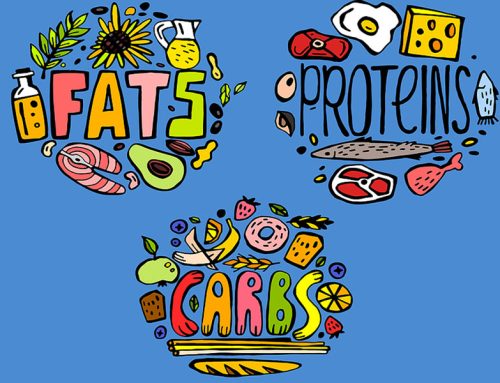Every cliché you’ve ever heard about the importance of planning is true. Failing to plan is a disaster waiting to happen. Planning is power. Planning is confidence. Planning is success. It’s no secret that I’m an advocate of meal planning, and it’s a major part of my Burn the Fat, Feed the Muscle system. I’m also a supporter of flexible dieting. If you don’t know what flexible dieting is, or if you do, but it seems like flexible dieting and meal planning don’t go together, then this will be the most important post you’ve ever read…
There are two major reasons I’m writing this:
1. Many people who know about flexible dieting are practicing (and preaching) it all wrong.
2. Many people know about flexible dieting, but they think flexible dieting and meal planning are antagonistic concepts.
Simply stated, it’s widely believed that if you follow a meal plan, you’re not being flexible. Not only is this false, it’s absurd. Let me explain by starting with my definition of meal planning…
What is meal planning?

Years ago I heard the great motivational speaker Jim Rohn say something that changed my life: He said, “Never start your day until you finish it.”
At first that may sound like a contradiction or even a riddle (like one of those Japanese Koans), but it’s really quite simple and straightforward.
What Rohn meant was you should never begin your day unless you’ve already planned it in advance (“finished it”), in your mind and on paper.
He was referring broadly to the daily actions that lead to success in all kinds of life goals, but this applies especially well to daily meal planning. Don’t start your day until you know what you’re going to eat that day. In other words, plan your meals in advance…
Do your calorie calculations first, then set your targets for protein, carbohydrate and fat (macronutrients, aka “macros”).
Next, create a daily meal plan that fits your macros and consists of (mostly) healthy foods that you enjoy. Use an electronic tool such as a simple Excel spreadsheet, an online tool like our Burn the Fat Meal Planner (at BurnTheFatInnerCircle.com), or a mobile app.
Then store that meal plan in your mobile device and print it on paper and stick it on your refrigerator or somewhere you’ll easily and regularly see it.
Do this and you’re now harnessing the power of goals. You now have an eating goal for the day and you’re avoiding most of the problems that arise when you just venture out into your busy day unprepared. Without planning, you leave yourself at the mercy of impulse and circumstances. Without goals, you wander aimlessly or float wherever the current of your busy life takes you. For many people, that’s straight to the nearest fast food joint or the donut table at work.
Worse still, eating haphazardly, even if you make healthy choices, makes it nearly impossible to establish a baseline, so you can’t track your weekly body composition progress or troubleshoot plateaus.
I first learned about meal planning one day in 1991. With the help of a bodybuilding nutritionist, together we sat down and created my meal plans using computer software. I printed them out so I could look at my daily eating goal every day. I never stopped. I’ve taught this method to all my clients for over three decades and I’m a believer in it to this day.
At the same time, I don’t think it’s a contradiction to say I’m also a believer in flexible dieting.
What is flexible dieting?
The general idea of putting some kind of leeway into your diet goes back to at least the 1990s, when the recommendation of taking a once a week cheat day was popular (a less refined way of being flexible that may have potential pitfalls, but it was a start). I’ve seen studies indexed in pub med using the terms “flexible dieting” as far back as 1999.
But generally, until about the mid 2000s, most diets were looked at as very rigid affairs, and especially in bodybuilding. You ate what your guru or coach told you to eat, you were given strict food lists to follow and there were unbreakable rules. Everything was black and white, do or don’t, good or bad.
Flexible dieting wasn’t explained more formally until years later. The first time I saw a complete program in print under the name “flexible dieting” was in 2005 in Lyle McDonald’s book on the subject. Within 5 to 10 years after that, almost everyone was talking about flexible dieting, and many books, plus countless articles had been published about it.
Okay so enough history. What is it?
Flexible dieting is based on the idea that it’s counterproductive to deprive yourself of your favorite foods completely, to follow someone else’s food list without deviation, or to restrict yourself to a short list of unprocessed health foods 100% of the time.
It may seem a noble intention to aim for eating 100% “clean,” but research on nutrition, behavior and psychology gives us evidence that the 100% strict approach usually ends in failure. (It’s also not much fun, especially when holidays, birthdays and social events roll around).
People who are too rigid with their diets usually learn the hard way that you tend to crave what you’re not supposed to have. Psychologists call it “ironic rebound.’
The more rules and restrictions you have about what foods are “bad” and what you can “never eat”, the more likely you are to eventually break those rules. Even if you’ve got strong willpower and lots of restraint, over time, the pressure of missing your favorite foods builds up, social pressure gets added on top, “life happens,” and ultimately, you cave in to cravings or temptations.
The irony of it all is that a single diet mistake is not a big deal. The bigger problem is in the all-or-nothing mentality of the dieter that makes a mountain out of a molehill.
After a single slip up, like having a piece of pizza that wasn’t on their meal plan, the perfectionist (un-flexible) dieter feels as if their entire program is blown. They figure, “I already screwed up, so it doesn’t matter now,” and they proceed to polish off a whole pie, and wash it down with a liter of cola or a six pack of beer. It’s as if a switch in their head was flipped from 100% “on” to 100% “off.”
Now they’ve really set themselves back, guilt follows the binge, they feel like an even bigger failure, and it’s “back to square one” next Monday (or they abandon their entire plan). If that slice of pizza were actually allowed as part of the weekly meal plan to begin with, eating it would not be seen as a failure, and not given a second thought – it would be enjoyed.
Both real world experience and scientific research have shown, paradoxically, that people who have fewer food restrictions, who include favorite foods, and who make an allowance for cheat meals, have a better long term adherence, a higher fat loss success rate and are less likely to show symptoms of eating disorders. They don’t feel deprived, and they’re happier because they can more easily participate in social events that involve food.
Compliance to a calorie deficit is required for fat loss. And for good health, the majority of your calories should come from nutritious, unprocessed foods. But you can allow a small portion of your calories for any of your favorite treat foods and still reach your goals. Ice cream, chocolate, pizza, pancakes, French fries, even cheesecake – anything goes.
No foods should be forbidden in flexible dieting (outside of allergy, intolerance, certain autoimmune disorders and so on), or it defeats the purpose.
If you enjoy “cheat foods” occasionally in a disciplined, measured fashion, as part of a structured, by-the-numbers nutrition plan, it will usually help, not hurt. It will help overweight men and women get the fat off and maintain their new healthy weight long term, and even competitive bodybuilders and fitness models these days are using carefully planned cheat meals without sacrificing condition, making what is otherwise a very strict diet much more tolerable.
Why people believe meal planning and flexible dieting oppose each other
I support flexible eating and I acknowledge the research that supports it, as well as the ongoing success people are having in the real world. I also believe creating meal plans in advance is one of the most powerful first steps for taking charge of your body composition and health.
However, many people who now call themselves flexible dieters, do not think meal planning and being flexible go together. As best as I can figure, they think that if you write a meal plan in advance, or get a meal plan from a coach or nutritionist, then you are being rigid because you now have a prescription you’re forced to follow.
They believe instead, that all you have to do is follow handful of sensible eating guidelines that have flexibility built in, and you don’t have to know in advance what you’ll eat each day. For example, a flexible dieter might have guidelines like these:
- Track your calories and grams of protein, carbs and fat (“macros”).
- Eat mostly unrefined, nutrient-dense healthy foods (aim for 90%).
- Eat foods you like that you can see yourself eating for life.
- There are no forbidden foods.
- Eat anything you want with 10% of your calories.
Each person’s guidelines might be a little different – some might have guidelines about portion sizes (deck of cards or the size of your palm) or suggest “eat until you are 80% full” instead of counting calories, and so on, but the idea is the same. With flexible dieting, there is some structure, but inside the boundaries that are set, you can take the ball and run with it anywhere you want (there’s no prescription of specific foods you “must” eat).
“If It Fits Your Macros…”
Some dieters, especially those who follow the IIFYM (If It Fits Your Macros) method, tend to be more opposed to premade meal plans than others. IIFYM is a specific type of flexible dieting and with IIFYM, the rules are simple: calculate your ideal daily targets for calories, protein, carbs and fat, make sure you eat enough “healthy” food to reach your daily fiber and micronutrient needs, and after that, eat anything you want. Just use an app or electronic device to log in your food as the day goes on, because you have to be strict about the macros and calories when doing IIFYM.
Doing meal plans by the numbers – calories and macros – is not something I’m a stranger to. That first meal plan I created back in the early 90’s on a desktop computer – it wasn’t just a list of foods or even just a list of portion sizes, it had the calories and macros for each food listed, as well as subtotals for each meal and grand totals for the day at the bottom.
This is one point where I agree with IIFYM. There are other “flexible dieting” methods that work which don’t require counting calories or macros (the portion method, for example), but tracking calories and macros is worth it, in my opinion.
That’s especially true for beginners who can’t accurately eyeball portion sizes or ballpark calories because they don’t have any experience or nutrition education yet. Tracking calories and macros is also important when you’re stuck at a plateau or when a lot is at stake like physique competition.
A brief rant on the shortcomings of IIFYM
I’ve always set up meal plans by the numbers (calories, protein, carbs and fat), and I also like flexible dieting, so IIFYM should be a good idea then, right? Well, maybe. It depends on how you approach it. Something that surprised me was the first time I heard of this thing called “freestyle IIFYM.”
Freestyle is referring to the highly flexible method of going into your day with nothing but goals for calories, macros and (hopefully) eating enough healthy food to hit your “fiber and micros.” But aside from that, there’s no meal plan.
This type of IIFYMer doesn’t know specifically what he’s going to eat for the day, only how much. That’s the idea – he sees that as the ultimate in flexibility. I get it, but I also think starting your day without some kind of plan is a bad idea for most people, especially if you’re struggling with fat loss.
IIFYM may be popular (at least in the younger generation, and especially online, if #hashtag volume is any indication), but the way I see it, IIFYM has become the ugly stepchild of flexible dieting.
I’m not entirely sure what caused this mutation in flexible dieting’s acronymed offpring. Some, who adopted a low calorie junk food diet because they found out they could get away with it and still get lean (look up Dr. Haub and the Twinkie Diet experiment), are flat out doing it wrong – the unhealthy way. But I suspect that many IIFYMers simply lack the communication skills to explain it well, so it ended up a convoluted mess of the originally well-intentioned idea.
I have to laugh when IIFYM dieters complain that people misunderstand what they’re doing and wonder why everyone thinks IIFYM means only eating pop tarts and cheesecake, when actually 80% or 90% of their calories come from traditional bodybuilding foods (aka “bro food.”)
Could it be because they mostly post photos of poptarts and cheesecake in their social media feeds with #IIFYM hashtags, while bragging how they eat anything and still get ripped? (which is insufferably annoying, by the way). It’s not hard to see why IIFYM has caused a lot of confusion and silly debate.
Flexible dieting is a simple concept that’s easy to explain and easy to adopt into any kind of food philosophy. That’s why I prefer the term flexible dieting, and I would not shed a tear if IIFYM fell off the map. But I digress… back to the lecture at hand…
Why following a meal plan can still be flexible
Now, someone who agrees that flexible dieting is a good thing might say, “But Tom, if you give me a meal plan, and I have to follow exactly what’s on your meal plan, then I won’t be a flexible dieter anymore, will I?
My answer is, first of all, that’s not an accurate statement. What’s more, I don’t want to give you a meal plan, let alone ask you to follow mine. If I had my way, I would never give a daily meal plan to anyone. I would only teach readers how to create their own meal plans using templates, and simple nutrition rules or guidelines.
The only kind of meal plan you should want is one that’s customized for you. That means you either learn how to do it yourself or you sit down with a coach and do it together. At the very least, your coach creates a customized plan based on foods you’ve said you enjoy eating.
There’s nothing worse than generic meal plans.
Why do nutrition books and fitness coaches give cookie cutter meal plans anyway? Because almost every client demands it. The market demands it. If you put out a fat loss book with no meal plans in it, you get complaints from readers who say, “Where’s the meal plans?” People have been conditioned by the industry that a diet book is supposed to be more meal plans (and or recipes) than education.
Furthermore, it’s human nature to want everything “done for you.” The average person doesn’t want to read 225 pages about nutrition education – they want to read 25 pages of nutrition science or theory and get 200 pages of meal plans and recipes. They don’t want to do the work of crunching numbers and creating a meal plan schedule themselves. It seems like work to them.
Unfortunately, this is one of the reasons many people struggle. “Done for you” is not educating you.
The difference between giving someone a fish and teaching them to fish
If I give you a fish, you will eat for a day, but then you will need me again every day, or you’ll go out begging for someone else to give you the next fish. I would rather teach you how to fish. If you’re a good learner, and you learn how to fish, you will eat well for life. You also don’t have to depend on me or anyone else to feed you in the future. See how well the old analogy fits?
Because of human nature and market pressures, the diet industry keeps prescribing meal plans – and yes, unfortunately it’s true, they may not be flexible. The mainstream diet industry is still based on the ideas of bad foods, forbidden foods, rigid food lists, foods to “never eat,” magic superfoods and strict diet rules. If you buy pop diets, you get pop diet (cookie-cutter) meal plans.
I would rather let you make your own choices inside a structured but flexible framework. If I do show you a sample meal plan (which I know most people will still want to see), I will explain that it’s only an example of how I might eat, or how other people successful at body transformation eat, not a rigid prescription for you. I would tell you that I want you to learn how to create your own meal plans, and I’m simply showing you samples as idea starters.
Bottom line, here is how a meal plan can be flexible: You create and customize your own!
Creating your own meal plans also aligns with what psychology research says about autonomy and self-motivation. If you feel you had a hand in the process of creating your own program (you don’t feel like it was passed down from a diet dictator), you’ll be more self-motivated and more likely to make the changes a lasting part of your lifestyle. That’s because autonomy (your freedom of choice) is linked to intrinsic motivation. This is yet another reason why flexible dieting works, and it has not been discussed nearly enough yet.
Here’s another reason why working off a daily meal plan can still be called flexible dieting: Who says you have to follow the same meal plan every day? Granted, I follow the same meal plan every day, more or less, but that’s my choice. I have personal reasons I do that, and there’s also science saying it can help with fat loss.
If you don’t want to eat the same thing every day, you don’t have to. Make two meal plans. Make three! Make seven, if you really want to, but you don’t need many. I’ve seen diet books with 12 weeks worth of different daily meal plans. Who in the world buys a diet book and eats exactly what someone else prescribed for 84 days?
However, if you simply have two or three daily meal plans that you created and you rotate them, that is enough variety to make most people happy. If you have three meal plans with five meals each, that’s fifteen different meals you could rotate!
There’s even more. For those freestyle-loving people, you can make substitutions off one meal plan on the fly – food by food or meal by meal. With the right meal plan template, it’s paint-by-numbers easy.
Suppose oatmeal, a banana and scrambled eggs is on your breakfast meal plan, but you don’t want oatmeal yet again this morning. If you understand the body-building food category system, like the one in Burn the Fat, Feed the Muscle, you know that all you have to do is swap one food with a different food from the same group and your calories and macros for the day will automatically be in the ballpark.
Lets suppose you were eating ½ cup (40g) of oatmeal. That’s 150 calories. If you swap for 2 slices of Ezekiel bread toast that’s 160 calories. Close enough – you’re done! What could be easier than swapping starchy carb for starchy carb or protein for protein?
All you have to do is learn about those food categories so you can make exchanges. This isn’t rocket science and it isn’t new. In fact, good dieticians have been teaching food exchange systems for as long as I can remember. This is simple stuff! It’s only hard if you make it so by accepting the wrong (rigid) rules or trying to micromanage.
Why following a structured yet flexible meal plan is the most powerful nutrition strategy
There are things I’ve changed my mind about over the years, and there were things I learned I was wrong about. But nothing will ever dissuade me from my belief that working from a daily meal plan is a great way to transform your body and health.
You don’t have to adopt all my “body-builder nutrition” rules. If you are paleo, go ahead, follow paleo rules. If you are vegan, follow vegan rules. If you are gluten intolerant, follow gluten intolerant rules. If you are low carb, follow your brand of low carb rules. These things don’t matter when creating meal plans. What matters is that you do create a meal plan and follow it.
When you create your own meal plan, it’s yours, and that makes it flexible to begin with. It’s flexible if you learn how to make changes for day to day variety. It’s flexible if you learn how to make food or meal exchanges on the fly. If you eat mostly healthy foods but leave room for your favorite foods and treats on special occasions, it’s flexible. If you reject the idea of forbidden foods and being 100% strict, it’s flexible.
How to put these ideas into practice
I thank you and applaud you for sticking with me to the end of this post, because this is life-changing stuff. If you want to take the next step, there are tools that can help you put this into practice, and many of them are free.
You can create a meal plan with something you probably already have installed on your computer – a spreadsheet (such as Microsoft Excel). You can download my free spreadsheets here: www.burnthefatinnercircle.com/public/Daily-Meal-Planner-Spreadsheet.cfm
You can use your favorite mobile app, provided it has robust enough daily meal plan functions. There are paid and free apps that do this. My Fitness Pal is popular among Burn the Fat readers. Lose it, FatSecret and My Macros have also come up in our recent discussions (if there’s another one you like, feel free to share it in the comments below, along with why you like it).
Or you can use the ultimate meal planning tool – the Burn the Fat Meal Planning software, available to our members at www.BurnTheFatInnerCircle.com.
And remember something: If you create your meal plan in advance, including tallying up the calories, protein, carbs and fat, you don’t have to use an app every day or count anything else! You’ve already crunched the numbers! Now, just follow your plan!!!
Last but not least, of course, if you want to learn about a complete meal-building and daily meal plan creation system, be sure to check out my newest book, The Burn the Fat, Feed the Muscle Guide To Flexible Meal Planning.
Train hard and expect success,
Tom Venuto,
Founder, Burn the Fat Inner Circle
Author, Burn the Fat, Feed the Muscle (BFFM)
Author, The BFFM Guide To Flexible Meal Planning

Tom Venuto is a natural bodybuilding and fat loss expert. He is also a recipe creator specializing in fat-burning, muscle-building cooking. Tom is a former competitive bodybuilder and today works as a full-time fitness coach, writer, blogger, and author. In his spare time, he is an avid outdoor enthusiast and backpacker. His book, Burn The Fat, Feed The Muscle is an international bestseller, first as an ebook and now as a hardcover and audiobook. The Body Fat Solution, Tom’s book about emotional eating and long-term weight maintenance, was an Oprah Magazine and Men’s Fitness Magazine pick. Tom is also the founder of Burn The Fat Inner Circle – a fitness support community with over 52,000 members worldwide since 2006. Click here for membership details





Leave A Comment